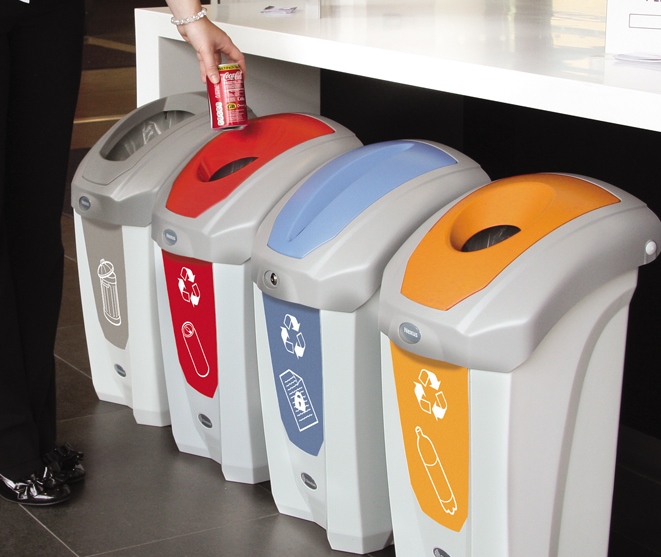Packaging minimisation

Principle
When choosing a cleaning product or disinfectant, it is important to consider not only its effectiveness and conditions of use, but also its environmental impact. Cleaning products can contain non-biodegradable chemicals, with uncertain or harmful effects on health and the environment. The NF Environnement label and the European Ecolabel distinguish products that contain no hazardous substances. This is the reason behind the requirement that 80% of cleaning products used in your establishment be environmentally certified, and that you give preference to all-purpose products instead of accumulating specific-use products.
Explanations
This process is based on eliminating disposable products, cutting the number of individual packaging units
at each stage of the customer's stay, and using refillable, recyclable and/or recycled products. The products and supplies purchased must be analysed, and alternatives considered, in collaboration with suppliers and staff members. Technical adaptation may be required, and it is important to communicate with staff and customers to explain the steps taken.
Go farther in this direction.
Implementation
Examples of solutions by type of space:
1- Bathroom
- Hygiene products: ecocertified soap, shower gel, shampoo dispensers
-Avoid single-use products such as sewing kit, shower cap, shoe shine sponge, body cream, tooth care kit, shaving kit, etc. / offer them only on request at the reception desk
- Prefer glasses tumblers instead of plastic cups, or use items made from renewable, biodegradable and compostable materials.
2- Guest room
- Remove minibars, or replace minibar beverages with drinks in plastic containers, or in returnable/refillable bottles
- Prefer reusable or recyclable hospitality items: bathrobe, slippers, etc.
- Avoid water bottles in rooms: place water coolers in hallways, reception areas, or offer water in bottles at the reception desk, informing customers of the reasons for this choice
- Distribute information such as the hotel directory, room service menu and other content via a dedicated internal television channel or the hotel's website, instead of printed documents, to save paper.
- Place separate waste collection receptacles in rooms, with instructions for sorting waste.
3- Linens
- Equip cleaning carts with separate waste receptacles
- Work with cleaning staff to collect and recycle the packaging of cleaning products
- Review and revise cleaning products and procedures (see the section on proper use of detergents and disinfectants)
- Discuss with your supplier the possibility of having linens delivered in reusable textile bags
- Reuse cleaning product pallets, or have the supplier take them back.
4- Administrative office
- Use rechargeable toners and ink cartridges
- User rechargeable batteries for battery-powered devices (e.g. television remote controls).
- Prefer mugs, washable and reusable dishware. Use bulk packages for coffee break supplies (coffee, sugar, cookies, etc.)
- Drink tap water
5- Breakfast
- Eliminate individual portions: exceptions are made for fats and oils, milk-based products, spreads, jams and jellies, products for diabetics and special dietary needs.
- Prefer products in bulk packaging
- Avoid individual dose coffee machines, particularly for seminar coffee breaks
- Avoid small drink containers (< 1 litre)
- Use washable or recyclable tablecloths, mats and napkins
Costs
The initial investment in new product dispensers or purchase of containers for breakfast items can be substantial at the outset. The payback time is short, however, considering the savings made on bulk purchases, product use and time/cost of waste separation.
Benefits
1- Economic gains on purchases: fewer hospitality items purchased, elimination of individual packaging that is generally more expensive than bulk packaging
2- Time gains in waste separation
3- Reduced environmental impact: less production, less transport, less waste to manage
Constraints
1- Time devoted to research on products and alternative solutions
2- Time devoted to staff training
3- Staff adaptation time
4- Changes in customer behaviour